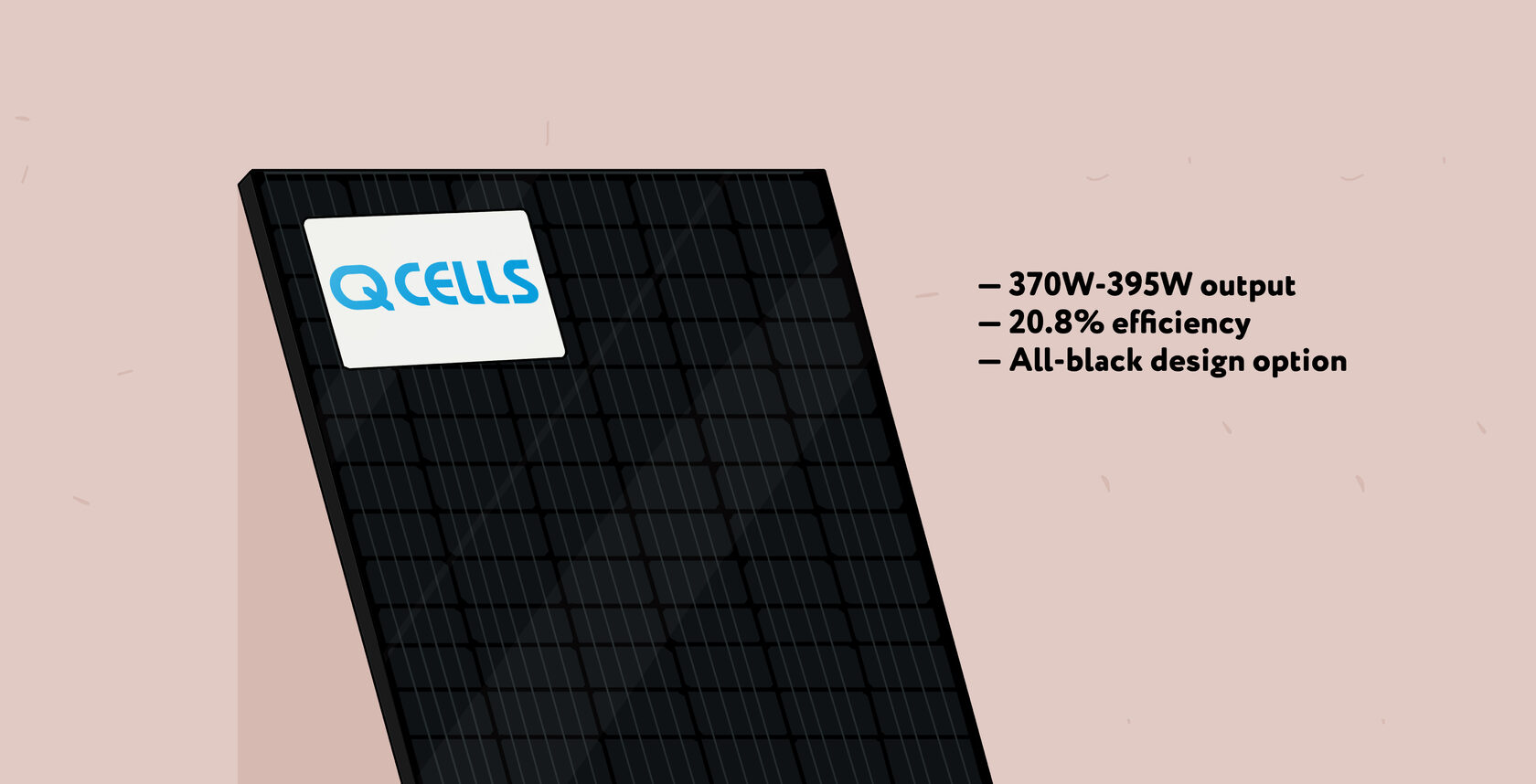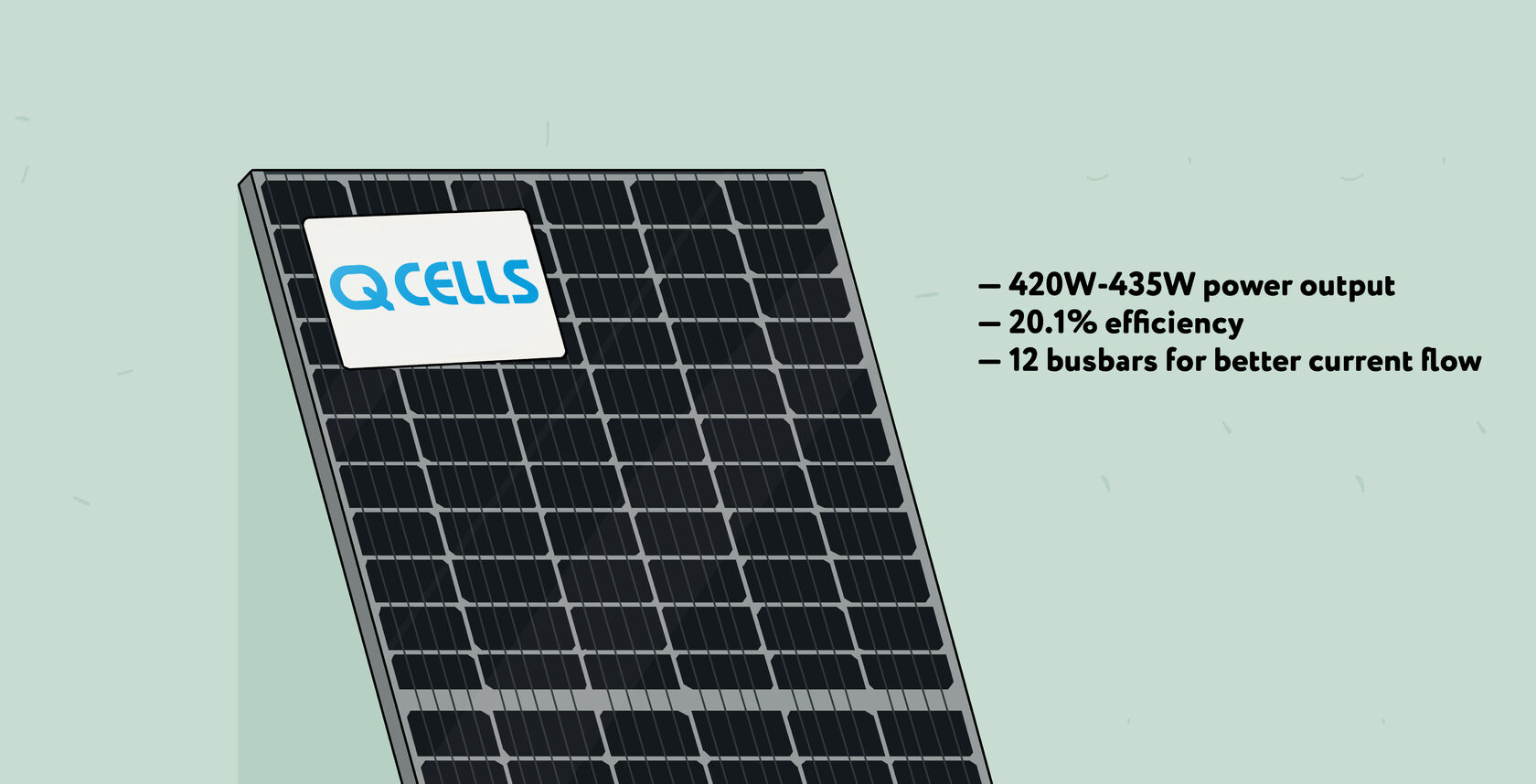
Account
- Sign in / Register
- Orders
- Quotes
- Wishlist
- Comparison list
Solar market is dominated by China. Yet among top manufacturers, there is a company that is not Chinese and not even 100% European, Asian, or American. This is Hanwha Q CELLS, one of the most beloved brands in our store. Here is our Hanwha Q CELLS solar panels review.
Key takeaways
Q CELLS was born as a German company that did really well until the 2010s. When things went downhill, it was bought by the Korean Hanwha Group. Now their headquarters are in Seoul, their engineers are in Korea and Germany, their factories are located in the USA, Malaysia and China. It’s well known brand and installers in every US state know how to work with these panels.

We are known for quality, and our longevity of 25 years in the industry is essentially unrivaled. We also have a great amalgamation of creative German minds coming together to produce what we think are often the most reliable, high-performance solar panels out there.
While the early history of Q CELLS company was shaky, currently it is ranked as Tier 1 solar manufacturer by Bloomberg which means it is a prospering and economically stable brand. International production and offices in countries all over the globe mean that customer support will be most likely provided without any problems, whether you are in Europe, Asia or North America. The teaming of German engineers and Korean solar experts makes the final product as modern and cutting-edge as possible. Let’s take a look at what they have come up with.
Aside from panels, Q CELLS offer energy storage systems and solar panel system financing
Q CELLS engineers always try to implement specific innovations into their products. You can find a world record for their polycrystalline module’s 19.5% efficiency in 2015 in their list of achievements. What they are most famous for is their Q.ANTUM and Q.ANTUM DUO technology.
The Q.ANTUM is an improvement on Passivated Emitter Rear Cell (PERC) technology. PERC utilizes the rear side of a solar cell: an additional layer reflects the sunlight back into the cell and allows it to convert more of light into electricity. German and Korean experts have sufficiently improved the coating of this layer, almost making a mirror out of it. In the end, with Q.ANTUM technology you get better output, improved performance in low-light conditions and at high temperatures.

Q.ANTUM DUO is the further development of this technology. Engineers started to add up to 12 busbars to improve the flow of electrons inside a panel. This resulted in 1% higher output. Using halved cells brought an additional 3% power increase. Finally, engineers have replaced PV ribbons that are used as connectors for solar cells with wires. As a result, reduced width and internal reflection decreased shading impact by a total of 75%.
Finally, Q CELLS experts took care of the possible threat of Potential Induced Degradation (PID). PID is a result of so-called stray currents: it occurs particularly often in wet weather and can lower the output of a PV by up to 20-30%. It is a serious problem as you can’t detect it without special equipment. Back in 2013, solar panels of 19 out of 23 global manufacturers were susceptible to PID. Q CELLS studied the PID phenomenon closely, took preventive measures and succeeded to fully nullify the threat of PID failure with Q CELLS solar modules. The risk of hot spots development decreased too!
20%-23% efficiency to use available space to the fullest
Q CELLS panels have energy conversion rates anywhere between 20% and 23%. These are very good numbers, ones of the highest in the industry. High efficiency ratings allow you to use your space more efficiently and get by with fewer panels. Q.ANTUM DUO technology based on PERC is what guarantees a good performance of Q CELLS panels.
Panels from a Korean company come at fairly comfortable prices, occupying the middle of the market’s price range. As always, Chinese competitors, like LONGi, Trina or JA Solar, offer cheaper products. At the same time there are enough brands with much higher prices: Panasonic, REC, LG.
>86% of rated power after 25 years in service
Q CELLS offers their customers from 12 to 25 years of product warranty. Besides, there is a 25-to-30-year performance warranty. The power output of a Q CELLS module should not drop below 98% in the first 12 months – the first year is when the panel degrades the most. By the end of the year 25 your PV modules should retain from over 86% to over 90% of their power, depending on the model, which is considered above average. The modules with a 30-year warranty promise at least 88% by year 30. However, there are brands that offer better and longer warranties – for example, Panasonic.
Q.ANTUM DUO technology of Q CELLS panels significantly improved the behavior of panels in different types of weather. They do well in low-light conditions: on cloudy days and in the winter. On a sunny day the irradiance of a panel is somewhere around 1000 W/m2. Q CELLS panel performance only drops to 95% when the irradiance is at 200 W/m2. What is more, the output at high temperatures is improved: temperature coefficient is at -0.36% for every degree above 109°F. The shading tolerance is also better than standard.
The panels also can be considered quite resilient: residential modules can withstand 4000 Pa wind load which is equivalent to 180 mph wind. PV modules for commercial and industrial installation are less sturdy, though, according to the datasheets: only 2400 Pa of maximum wind load (140 mph wind).
So what’s good and what’s bad about QCELLS panels? Let’s look at their advantages and disadvantages separately, starting with pros:
There aren’t any immediate disadvantages that stand out with Q CELLS products. The cost of Korean panels tend to be higher than those of Chinese solar giants. Yet Q.CELLS definitely have their ways of being compelling to customers.
Q CELLS puts out on the market PV modules for different applications. While most options have a simple, generic look, some models are available in all-black design. We have asked our engineer to take a look at a few models and share his opinion:

The Q.PEAK DUO ML-G10+ QCELLS model is an equally good choice for residential and small commercial projects. Q CELLS 400 watt solar panels are well prepared for all kinds of weather: enhanced aluminum frame offers better protection against strong winds, and the module less production in low-light conditions and on hot days. The panels come with 25-year warranties for product and production. You can also find Q CELLS 395 solar panels in our store as a variation of the same model.

L-G8.2 QCELLS solar panel is designed for commercial and industrial installations, whether it’s a rooftop array or ground-mounted system. It provides a 420W-435W power output with up to 20.1% efficiency. This particular model has 12 busbars in its construction for better current flow. Q.ANTUM DUO technology not only improves the production but the temperature behavior as well. The panel withstands 2400 Pa of wind front load and 5400 Pa of snow load. Notice that the panel is slightly heavier than usual: 55 lbs.
Here is a bifacial panel from Q CELLS. The rear side of Q CELLS 480W solar panels provides up to a 20% production bonus, given that it’s installed correctly. As with most Q CELLS panels, this one shows good output levels in low-light conditions, such as cloudy and winter days. Double glass module design ensures an extended lifetime with a 12-year product warranty and an improved 30-year performance warranty.
Q CELLS 410W Solar Panel 132 Cell Q.PEAK DUO BLK ML-G10+ Assembled in the USA
Pickup on Mon, Apr 28 from Buffalo Grove, IL
Delivery on May 01–06
The Q.CELLS 410W solar panel from ML-G10+ series is a great option for homeowners looking to harness solar energy. With a power output of 410W and an efficiency of 21%, this panel can generate enough electricity for your home’s needs. Backed by a 25-year warranty for both product and performance, and maintaining over 86% of its initial power output by year 25, the Q.CELLS 410W is a reliable choice for residential solar systems.
Wrapping up our 2025 Q CELLS solar panel review, let’s list the focal points about the brand and their panels.
While we tried to be as critical as possible (to the point where we had to nitpick), it appears that Q CELLS have all the angles covered and their panels are indeed amazing. We can only strongly recommend them. With that, we end our Q CELLS solar panels review 2025 and will be back with more information – stay tuned.
Stay tuned
Learn about the latest arrivals and discounts first!

